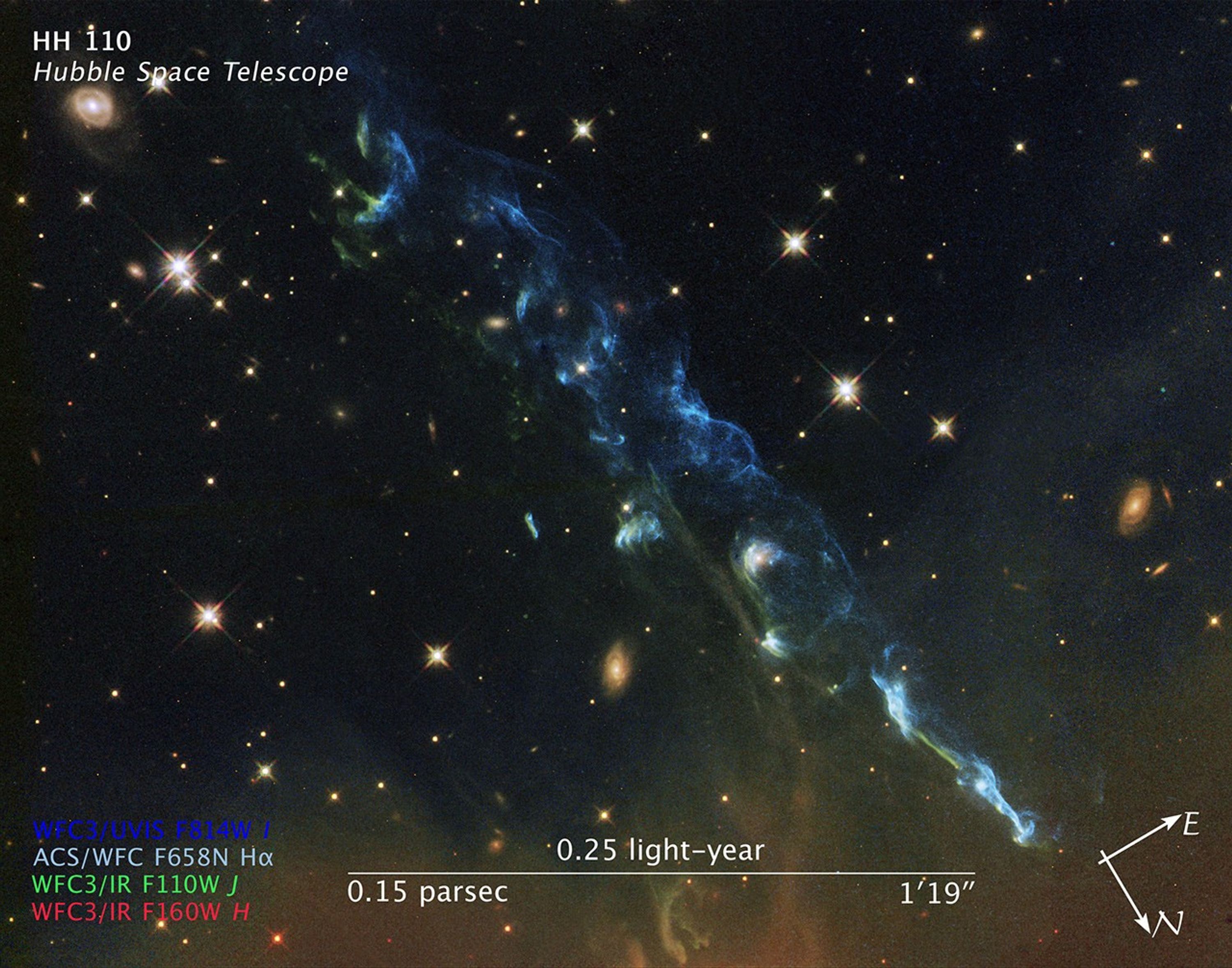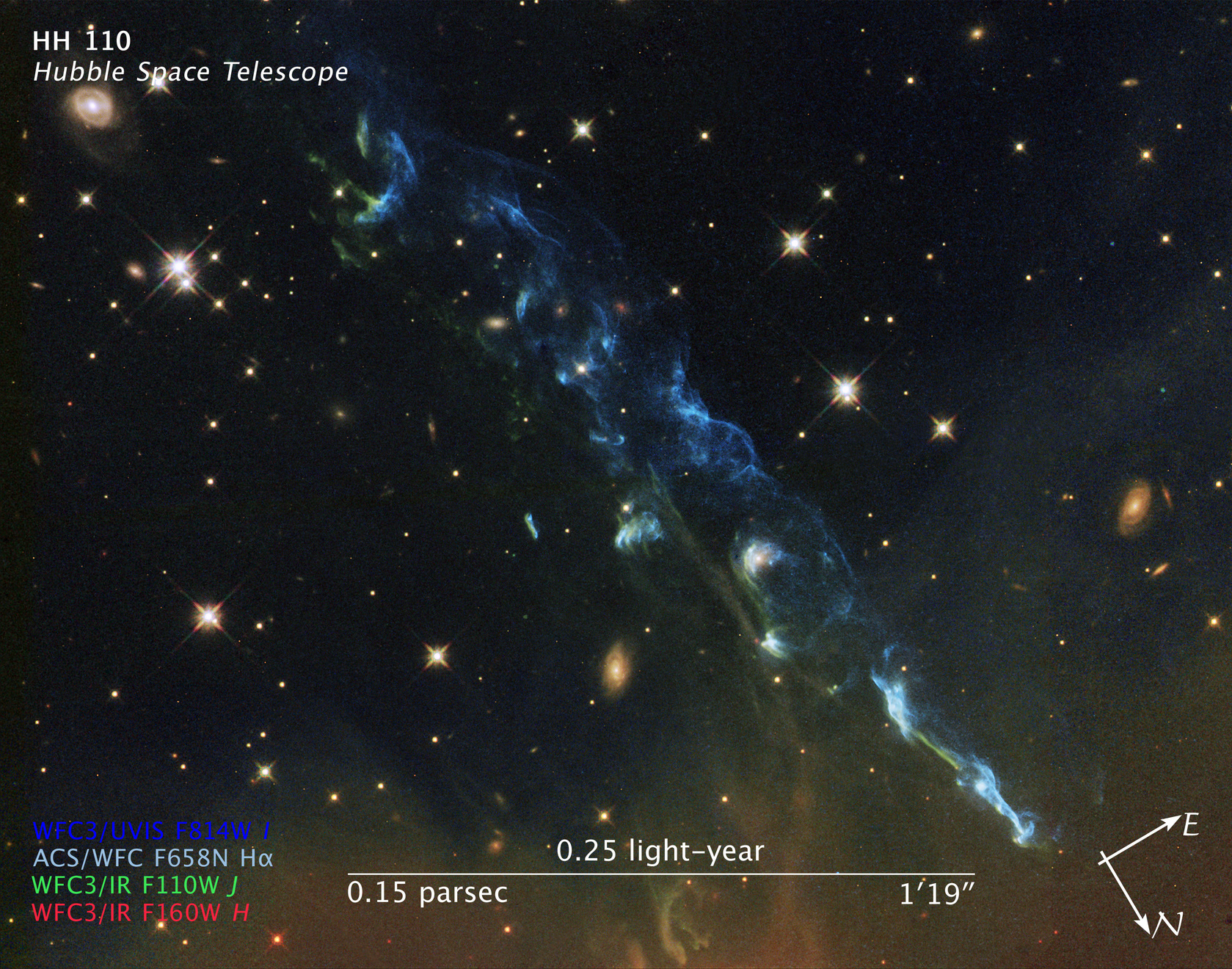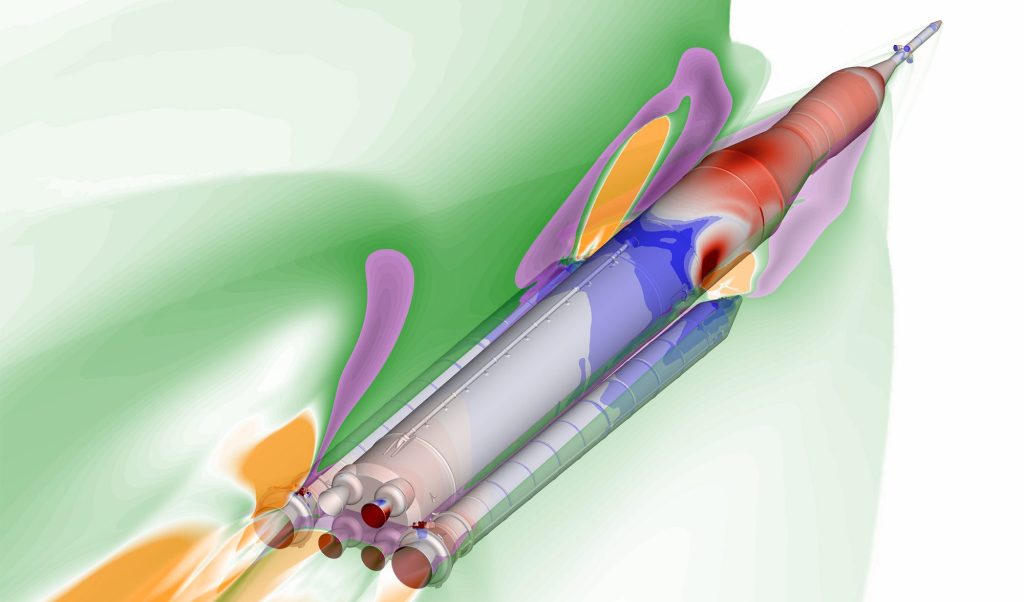1 min read
Compass and Scale Image of HH 110

About the Object
- R.A. PositionR.A. PositionRight ascension – analogous to longitude – is one component of an object's position.05h 51m 24.91s
- Dec. PositionDec. PositionDeclination – analogous to latitude – is one component of an object's position.02° 54' 51.84"
- ConstellationConstellationOne of 88 recognized regions of the celestial sphere in which the object appears.Orion
- DistanceDistanceThe physical distance from Earth to the astronomical object. Distances within our solar system are usually measured in Astronomical Units (AU). Distances between stars are usually measured in light-years. Interstellar distances can also be measured in parsecs.1,300 light-years (400 parsecs)
About the Data
- Data DescriptionData DescriptionProposal: A description of the observations, their scientific justification, and the links to the data available in the science archive.
Science Team: The astronomers who planned the observations and analyzed the data. "PI" refers to the Principal Investigator. - InstrumentInstrumentThe science instrument used to produce the data.HST>ACS/WFC, HST>WFC3/UVIS, and HST>WFC3/IR
- Exposure DatesExposure DatesThe date(s) that the telescope made its observations and the total exposure time.January 21, 2004 and April 25, 2011, Exposure Time: 2.6 hours
- FiltersFiltersThe camera filters that were used in the science observations.WFC3/IR F110W (J), and F160W (H), ACS/WFC F658N (H-alpha), and WFC3/UVIS F814W (I)
- Object NameObject NameA name or catalog number that astronomers use to identify an astronomical object.HH 110
- Object DescriptionObject DescriptionThe type of astronomical object.Herbig-Haro Object
- Release DateJuly 3, 2012
- Science ReleaseNASA’s Hubble Views a Cosmic Skyrocket
- Credit

This image is a composite of separate exposures acquired by the ACS and WFC3 instruments. Several filters were used to sample various wavelengths. The color results from assigning different hues (colors) to each monochromatic (grayscale) image associated with an individual filter. In this case, the assigned colors are: Blue: F814W (I) Cyan: F658N (H-alpha) Green: F110W (J) Red: F160W (H)

Related Images & Videos

NASA's Hubble Views a Cosmic Skyrocket
Herbig-Haro 110 is a geyser of hot gas from a newborn star that splashes up against and ricochets off the dense core of a cloud of molecular hydrogen. This Hubble Space Telescope photo shows the integrated light from plumes, which are light-years across. Herbig-Haro (HH) objects...
Share
Details
Claire Andreoli
NASA’s Goddard Space Flight Center
Greenbelt, Maryland
claire.andreoli@nasa.gov





























